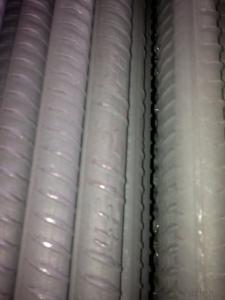Uk Solar Inverter
Uk Solar Inverter Related Searches
Best Solar Inverter For Home Home Power Inverter For Solar Best Inverter For Solar Pv Best Inverter For Solar Mini Solar Inverter For Home Solar Panel Inverter For Rv Inverter For 5kw Solar System Inverter For Solar Power Plant Inverter For Home Solar Solar Power Inverter For RvHot Searches
Solar Inverter On Grid Price Grid Tie Solar Inverter Price Solar Grid Tie Inverter Price Solar Grid Inverter Price Solar Inverter On/Off Grid Scaffolding Sales Uk Scaffolding Manufacturers Uk Hotel Furniture Suppliers Uk Textilene Fabric Suppliers Uk Medical Equipment Suppliers Uk Melamine Faced Chipboard Suppliers Uk Solar Inverter On Grid Price Solar Grid Inverter Price Solar Inverter On/Off Grid Scaffolding Sales Uk Scaffolding Manufacturers Uk Hotel Furniture Suppliers Uk Textilene Fabric Suppliers Uk Medical Equipment Suppliers Uk Melamine Faced Chipboard Suppliers UkUk Solar Inverter Supplier & Manufacturer from China
Okorder.com is a professional Uk Solar Inverter supplier & manufacturer, offers integrated one-stop services including real-time quoting and online cargo tracking. We are funded by CNBM Group, a Fortune 500 enterprise and the largest Uk Solar Inverter firm in China.Hot Products
FAQ
- Solar inverters are subject to voltage and frequency regulations, which differ depending on the country and are typically established by regulatory bodies or standardization organizations. To ensure the safe and reliable operation of the electrical grid, solar inverters in most countries must adhere to specific voltage and frequency limits. Voltage regulations dictate the permissible range of output voltage that a solar inverter can supply to the grid. This guarantees that the voltage remains within acceptable boundaries, preventing damage to electrical equipment or disturbances in grid stability caused by overvoltage or undervoltage conditions. The specific voltage limits are influenced by factors such as the type of grid system (e.g., single-phase or three-phase) and the voltage levels employed in the country. In contrast, frequency regulations establish the acceptable range of output frequency that a solar inverter can provide to the grid. The grid frequency is typically set at a specific value (e.g., 50 Hz or 60 Hz), and solar inverters must synchronize their output frequency with the grid to ensure compatibility. Deviations from the specified frequency can result in equipment malfunctions or grid instability. Compliance with voltage and frequency regulations is essential for solar inverters to facilitate the effective integration of renewable energy sources into the electrical grid. In numerous countries, solar inverters must meet specific technical standards or certifications to demonstrate their adherence to these regulations. These standards typically encompass various aspects of inverter performance, including voltage and frequency control, power quality, and interaction with the grid.
- Yes, a solar inverter can be installed in a multi-storey building. The installation of a solar inverter in a multi-storey building is possible and depends on various factors such as the availability of suitable roof space, electrical infrastructure, and compliance with local regulations. It is essential to consult with a professional solar installer to assess the feasibility and design a tailored solar energy system for the specific building.
- Yes, there are noise considerations with a solar inverter. While solar inverters typically produce low levels of noise, it is important to ensure that the inverter is placed in a well-ventilated area to avoid any potential fan or cooling system noise. Additionally, some older models of inverters may produce a slight humming sound during operation, although newer models have significantly reduced this noise.
- In a photovoltaic grid-connected project, the role of the inverter is to convert the voltage into AC 220V or 380V for the grid, since the transformer will raise the voltage again
- Spontaneous use is a way of grid, that is issued to the electricity, mainly their own family or internal use, the excess part of the power to the grid
- A solar inverter is specifically designed to convert the DC (direct current) electricity generated by solar panels into AC (alternating current) electricity that can be used to power household appliances and be fed back into the grid. On the other hand, a regular inverter is generally used to convert DC power from batteries or other sources into AC power. Therefore, the main difference lies in their purpose and the source of the DC electricity they handle.
- Yes, a solar inverter can be used in a net metering system. In fact, a solar inverter is an essential component of a net metering system as it converts the direct current (DC) electricity generated by solar panels into alternating current (AC) electricity that can be used in homes and businesses. The excess electricity generated by the solar panels is fed back into the grid through the inverter, allowing for net metering and potentially earning credits or reducing electricity bills.
- A solar inverter is designed to handle high temperatures by incorporating various heat management techniques. It uses heat sinks, fans, or other cooling mechanisms to dissipate excess heat generated during operation. Additionally, advanced thermal management systems are employed to regulate the internal temperature and prevent overheating. This ensures the inverter's efficiency and reliability even in hot weather conditions.
- Yes, a solar inverter can be used in a three-phase power system. In fact, there are specific types of solar inverters designed to work with three-phase power systems. These inverters are capable of converting the DC power generated by solar panels into AC power, which can be seamlessly integrated into the three-phase power grid.















































